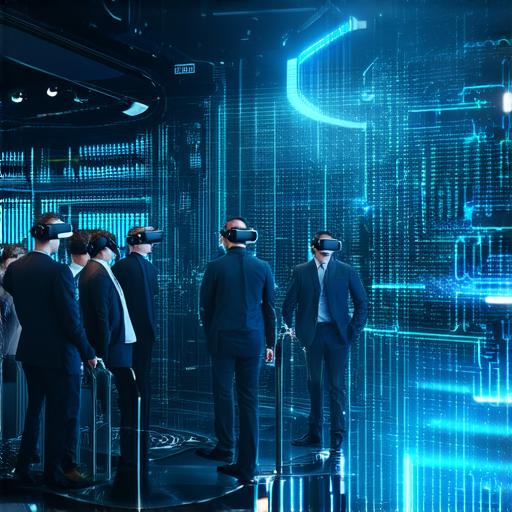<!DOCTYPE html>

Virtual Reality (VR) technology is becoming increasingly popular in various industries.
From gaming to healthcare, VR has proven to be an effective tool for enhancing user experiences. However, with the growing popularity of VR, there is a need to determine if VR development is a valuable investment for businesses.
In this article, we will explore the benefits and drawbacks of investing in VR development and provide practical tips on how to make the most out of your investment.
The Benefits of Investing in VR Development
VR technology has the potential to revolutionize user experiences across various industries. For instance, in gaming, VR provides an immersive and interactive experience that can significantly enhance player engagement.
In healthcare, VR technology is used for training medical professionals and providing patients with a more comfortable and effective treatment experience.
Similarly, in architecture and construction, VR allows designers to visualize projects in 3D, saving time and reducing costs.
2. Increased Productivity
VR technology has been shown to increase productivity across various industries.
For example, in manufacturing, VR can be used for training employees on how to use complex machinery or simulate different scenarios to improve decision-making.
In the field of marketing, VR can be used for virtual product demonstrations and immersive brand experiences.
3. Cost Savings
Investing in VR technology can lead to significant cost savings over time.
For instance, in the automotive industry, VR simulations can replace physical testing, saving money on materials and resources.
In construction, VR can be used for virtual site visits and design reviews, reducing the need for travel expenses.
4. Competitive Advantage
By investing in VR technology, businesses can gain a competitive advantage over their competitors.
For example, companies that use VR in marketing can create immersive brand experiences that stand out from traditional advertising methods.
Similarly, businesses that use VR for training and education can improve employee skills and reduce errors, leading to increased productivity and profitability.
Case Studies: Real-Life Examples of Successful VR Development Investments
1. Volkswagen Group’s Virtual Showroom
The Volkswagen Group created a virtual showroom using VR technology that allows customers to explore and customize cars in 3D.
This investment has led to increased customer engagement, improved product visualization, and reduced the need for physical dealerships, saving money on rental expenses.
2. Daimler’s Virtual Plant Tour
Daimler uses VR technology to provide a virtual tour of their factories, allowing customers to see how their cars are made.
This investment has led to increased customer engagement, improved brand awareness, and reduced the need for physical tours, saving money on travel expenses.
3. NASA’s VR Training Program
NASA uses VR technology for training astronauts in space missions.
This investment has led to improved decision-making, increased safety, and reduced costs associated with traditional training methods such as flight simulations.
The Drawbacks of Investing in VR Development
1. High Costs
VR technology can be expensive, both for hardware and software development.
Businesses may need to invest in high-end VR equipment and specialized software, which can be costly.
Additionally, ongoing maintenance costs such as updates and upgrades can add up over time.
2. Limited Accessibility
Not all employees or customers may have access to VR technology, which could limit the potential of VR development investments.
For example, some employees may not have the necessary hardware or software to use VR, while some customers may not be willing to pay for VR experiences.
3. Limited Applications
VR technology is still relatively new and has limited applications in some industries.
While VR has proven successful in gaming and healthcare, it may not be as effective in other industries such as finance or education.
FAQs: Common Questions and Answers About VR Development Investments
1. How much does a VR development project cost?
The cost of a VR development project can vary widely depending on the scope of the project, the hardware and software required, and the level of expertise needed.
On average, VR development projects can cost between $50,000 to $250,000 or more.
1. What industries are best suited for VR development investments?
Industries that are well-suited for VR development investments include gaming, healthcare, education, and architecture/construction.
However, the potential applications of VR technology are constantly evolving, and other industries may also benefit from VR development investments.
1. Can VR development provide a return on investment (ROI)?
Yes, VR development can provide a return on investment if it is used effectively and strategically.
By improving user experiences, increasing productivity, reducing costs, and gaining a competitive advantage, businesses can generate revenue and see a positive ROI from their VR development investments.
In Summary: The Future of VR Development Investments
Virtual Reality technology is rapidly changing the way we experience and interact with the world around us. While there are drawbacks to investing in VR development, the potential benefits make it a valuable investment for businesses that are looking to improve user experiences, increase productivity, reduce costs, and gain a competitive advantage.
